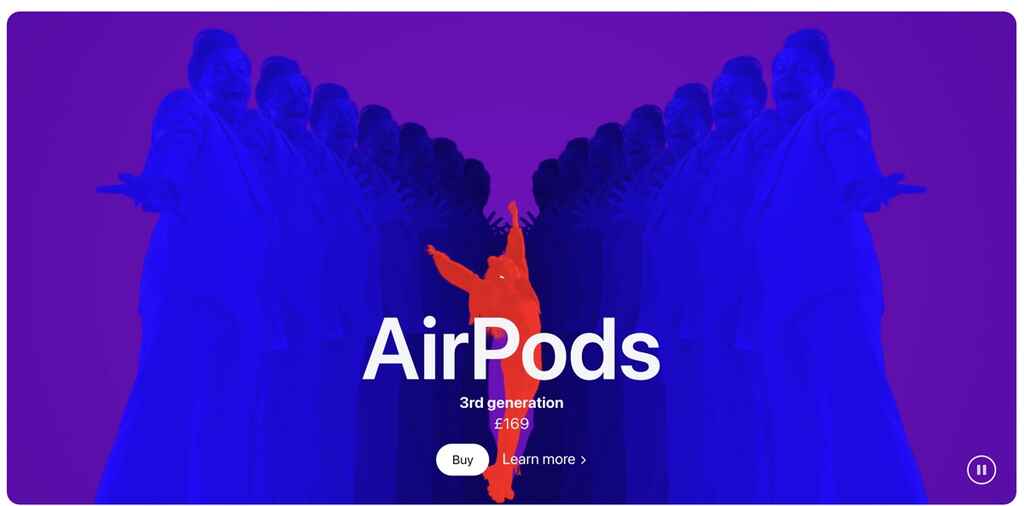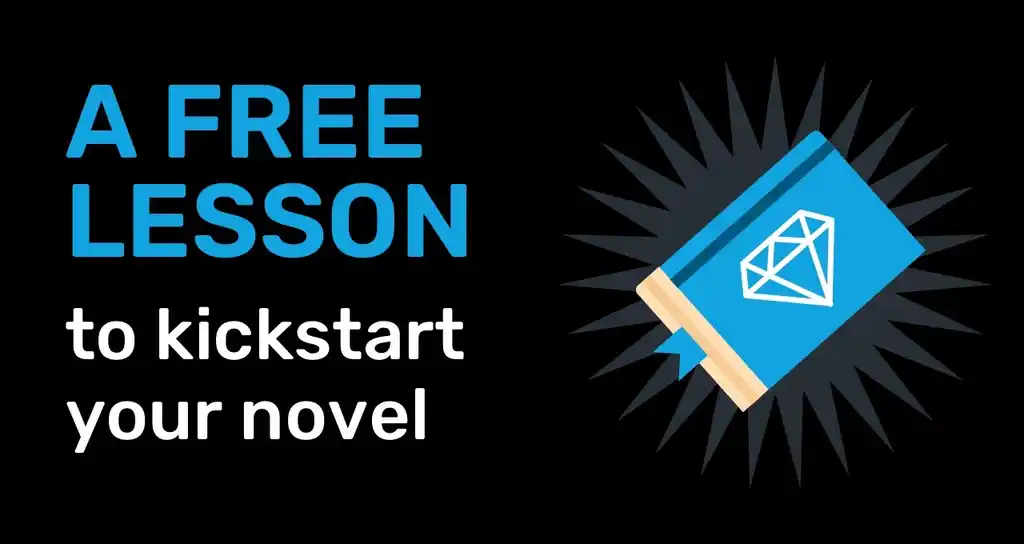This transcript has been edited for clarity and length.
Head to Stuart's Reedsy profile to work with him on your author website.
So, what are we gonna cover this evening?
- A little bit more about who I am.
- What is your author website for?
- What does your author website need to look like?
- How do you draw people to your site?
- How to get the most from your website designer.
I should point out at the very top that, of course, Reedsy has lots and lots of website designers — but you can also develop your own website as well. So this is not the only way to create a website, but we'll be focusing mostly today on what you need and how you'll manage with a web designer if you choose to use one.
So who am I?
So I'm a former lecturer from way back in time. I was head of the Theater and English department at a school. I was 25 years on the radio as a presenter and club DJ. For the last few years, maybe six or seven years, I've been training businesses and authors to use Instagram and other social media. I've also been working in the publishing industry for six years.
I'm part of the team at the Self-Publishing Formula — I help get their podcast live every Friday and handle other various bits and pieces throughout the year. I'm also part of the team behind Hello Books, a distribution system where we send free books to readers, and authors can sign up to have their books sent off to readers.
I've made over a hundred websites, so I've got lots of experience with different genres, different requests, and different needs. And hopefully, today, I can give you some insight into the best things you need for your author website.
I'm a Wix partner. So I do use Wix exclusively. That's after many years of trying other platforms, including WordPress, Squarespace, and various others. And for me, Wix was just the clear winner by a country mile. It's a brilliant platform for authors, cuz it's got everything in one place.
I use Wix exclusively, and I have legend status there, which is determined by how many sites you've made, not just by how cool you are. I am currently the highest-rated web designer on Reedy, with 54 five-star reviews. Now those reviews can't be made up. They're all genuine, and you know, I'm very and extremely proud of that.
I've worked with Reedsy for several years, and it's a brilliant platform. And I've been very happy with the clientele and the, you know, the things that I can create for people.
What is your website for?
Well, lots of things we're gonna cover off sort of full main ones I could think of today.
It’s your corner of the internet
It's the only thing you truly own when you fill in your author profile on Amazon, Facebook, or whatever it is. You're determined by their formats, colors, and styling; everything is theirs. And you don't really get much say with what you actually want.
A website gives you that sort of editorial and creative freedom to create whatever the hell you like. You can make it look exactly as you want. And that's quite an important part of what I'll talk about later as well. In terms of branding, you must have a thing that reflects you, your books, and anything else you want to showcase. If you’re a speaker, or I dunno a musician even — these are the sorts of things you can’t promote on Amazon, Facebook, or wherever else.
So it gives you a unique opportunity to put all the stuff that you think is relevant in your corner of the internet.
It's a place for readers to find you
If somebody Googles your name, you’ll want your name — and your site — to appear at the top of a Google search. (Other search engines are available.)
When somebody Googles your name, you’ll want them to find your site and learn more about you. So tell them a little bit more about you, who you are, what you do, and why you do it.
You'd be amazed how many authors I work with, and I say, “Send me some information about yourself, a bio or whatever,” and I get three lines saying, “I write crime thrillers, and I live in Ohio.”
That's probably not what a reader is looking for. They're looking for a lot more than that. People love behind-the-scenes features on DVDs. They love looking behind the curtain — and knowing more about you. Lee Child, for example: there's actually a book written about him called Reacher Said Nothing. That's a whole book about Child because there was a demand for information about the author.
Design your site around you and the stuff about you: why you write, what you write, who you are, and where you came from. All those kinds of things are critical to people's relationship with you. When I look at the stats on the author websites I run, I often see that the author bio page is one of the most-visited pages.
It’s a marketing tool
Obviously, you’re marketing to readers, but don't forget about publishers and other people in the biz. In fact, on the Self-Publishing Show last week, a publisher said, “When I'm assessing an author's viability, I will look at their website.” So it's gotta be great, not just for your reader, but for all the other people who might come along: journalists, reviewers — it’s not just for readers. This is a marketing tool that needs to be as wide as it can be.
Critically, your website is a place to collect reader emails. You'll have heard this a hundred times if you've been listening to any publishing podcast: email is the gold standard for communicating with readers. Obviously, you've got Facebook and Amazon and all that, but the one channel that you own and have control over this is found through collecting emails.
One of the primary things I would expect for any author website is to have a mailing list, and a way to collect those email addresses.
Of course, you want to have links to stores so that people can easily click through to wherever the book is for sale and buy the book. Most authors are gonna have links to Amazon. If they're not exclusive to Amazon, they might have a universal book link that points them to all different stores.
You want those links — those calls to action — easy to find and front of mind so that people see them and go, “Oh yeah, I'll give that a go,” and click the button.
There's a lot of talk about direct sales, where you cut out the middle person, and sell the books yourself. Obviously, you get more of the profit by doing that, but you have to think a little bit more about things like postage fees, then getting the books printed one way or another. More authors are asking me for this these days. Obviously, they're looking to get more of the money. They don't wanna give the money to Amazon. If you can sell your own books, you're gonna make more money, but it may not be the easiest or most appropriate solution.
Most authors I work with tend to go with online retailers, so they’ll focus on those links to stores on their websites.
What does your website need to look like?
Well, I'll give you one clue: Stay classy, authors. (There's my little Anchorman reference)
Make sure it's modern and up to date. A website built in 2000 — 22 years ago — is not going to look in keeping with other websites today. If your website looks dated, people will immediately get turned off. So always make sure that website is as up-to-date and as modern as it can.
Make sure it's reflective of your genre. People talk a lot about tropes and having the right tropes on your book cover so that readers understand what the book's about. Well, the same is actually true for things like websites. You want people to land on your website and instantly recognize who this is, what it's about, what kind of book they're expecting, and what kind of author this is.
It shouldn't just be a white canvas with your book in the middle. That's not enough anymore.
It starts with the cover
We'll talk a little bit more about that as we go through book covers, but here’s some Author 101: a book cover isn’t just a piece of art. They are my starting point for design. I always ask an author for their book covers. And generally, I won't start an author website until I've got at least one cover because they will best reflect your brand.
We'll talk about that a little more, but please ensure that your book covers are professional and high quality. Do your due diligence check against other authors in your genre and ensure your book cover stands up.
I have been sent some really bad covers. I know not all of us can see our work and be objective, but I recommend that you make sure you have the best cover you can get. Make it so it literally could be hung on the wall.
Your website should then form part of your branding. It should then look like your book covers — my recommendation is to use similar fonts to your book covers, use similar colors, and similar styles. If you think like a brand, you want people to see your website and recognize the design style from your book. All those things need to sit together so that, independently, people will immediately know who this is.
You're not Coca-Cola, but you can start to build a brand that works as an ecosystem around you, websites, social media, you know, website and book covers. It's all very, very important.
If we take this one, for example, this is James Blatch's website. He is also part of the Self-Publishing Formula. So I built James' site a couple of years ago. He's recently updated his book covers, so here’s what I did:
 I asked the book cover designer, the legendary Stuart Bache, to take the text off the book cover and give me just the image that he created for this book cover. I then used it as a backdrop to the landing page (excuse the pun). And I think you'll agree, it looks nice sat on top of the background. The fonts are the same, and so is the coloring.
I asked the book cover designer, the legendary Stuart Bache, to take the text off the book cover and give me just the image that he created for this book cover. I then used it as a backdrop to the landing page (excuse the pun). And I think you'll agree, it looks nice sat on top of the background. The fonts are the same, and so is the coloring.
So there's an idea for you: get more mileage out of that lovely book cover that you've spent, money on — use it on your website as something that speaks to readers. And immediately then I recognize it: I know who this is! I've got the same branding. I've got the same fonts.
Make sure the site’s up to date
I mean this more in terms of making sure all the links work. You'd be amazed how many author websites I visit where the links don't point to the right stores, or they're out date, or they don't work anymore for whatever reason. So just make sure that your website works. That's such a simple but obvious thing to say.
Are the images the best they can be? Are they really low res, and do they look nasty? Well, if they do, then get new ones, and update them. Make sure it's modern and contemporary.
Have you done an audit recently on your own website? Have you looked at it yourself and tested everything? Or even asked a friend?
This is a great tip for you: get one of your family members or a friend to go through the process of signing up on the website and see what happens. Make sure they get the autoresponder that they should get. When they fill in the contact form, make sure they get something back that says, “Hey, I've got your message. I'll get back to you.”
When you do an audit of your site, have a look at it with fresh eyes. Some of you probably haven't looked at your website for a year or more. You made your website, then you left it to run.
Motion and movement
Is your website alive?
When I look at where website design is going, I feel there's gonna be a lot more demand for interactive, moving, and kinetic design that feels alive.
Let's talk about somebody like Apple. They have got just about enough money to do a bit of research into what works for websites. So I always visit places like Apple to see what they're doing, how they do it because something tells me they’ve done their research.
If we just look at this recent release for third-generation AirPods and see what happens when you land on this page.
 So we've got some movement that draws you right into the webpage. It just brings you into what's going on. So just in terms of where I think web design is going, this is the kind of thing we might be seeing soon: more movement, more animation.
So we've got some movement that draws you right into the webpage. It just brings you into what's going on. So just in terms of where I think web design is going, this is the kind of thing we might be seeing soon: more movement, more animation.
If you're just gonna have a static website, you might as well give out leaflets. You almost want your website to be a film. This is almost an advert for you.
My unique selling point is that I try to build websites with a little movement and animation — just enough to keep the user engaged and see what I want them to see. Where are the BUY NOW buttons? Where are the book covers? How do I draw somebody into those places?
Use all available real estate
By real estate, I mean, places where you can put your web address. Many people say, oh, I don't get very many visitors. But then I say, “well, where have you put your web address?”
“At the back of my book,” and that's it.
Have you thought about things like putting it on your Facebook cover photo? In the description of the Facebook cover photo as well? Have it actually on the image itself — have it on your profile images on all your social media. Have your website in as many places where you've got graphics.
So whenever you create a graphic on Canva or wherever — always think about adding your web address to it somewhere. It doesn't have to be clickable. Ideally, it will be, but in many cases, if it's a flat image, it can't be, but always add it. Then you are putting your name and your web brand out there.
Don't forget those links in bios. Particularly places like Instagram and Twitter: make sure you have your web address there and always include a call to action in your bio.
Tell people who visit your social media profiles what they can expect if they click the link. So you might say, “Get the first chapter in my brand new novel by clicking the link below.”
What about the footer of your email? Have you definitely got your web address at the footer of your emails? You'd be amazed how many people click through from the bottom of an email. If you haven't, you're missing a trick. There are many free services out there — I think AppSumo has one called email badge. I think it's about $8. And you can add your web address and other links to the bottom of your email in about 10 minutes.
Don't forget the front and back of the books. You know, both of those should have your web address and tell people why they should visit and what's there.
Business cards: simple, old school. You may not go to places where you can give them out, but if you do, make sure you print them. They're so cheap. You can get a hundred for $9 or whatever.
And don't forget about regular posts on social media. If you're running out of things to say, why not say, “Hey, check out my website here and read about how I used to be a saxophone player,” or whatever?
Think about even monthly posts that have your web address in them. Do not ignore your social media as a powerful tool to get people to visit your website.
How to get the most out of a professional designer
First, as I've mentioned, ensure you've got excellent covers.
Get professional covers. I've said it twice already because it is probably the most important thing I'm gonna say today. It will help your designer — and it will help you if you're making your own — get a feel and flavor for your website needs. So it really is the number one starting point for any design when it comes to web design.
Multiple genres
Some of you probably think, “Well, I've got multiple genres, and my book covers are different.” Fine. There are ways to blend two together — or you have separate areas on each website: one which looks like this genre, and one which looks like this other genre. I've just finished two websites where one had seven series in different genres and one had eight.
Get visual inspiration from comparable authors
Make sure, as I said, to do some due diligence. Find some other sites by authors in your genre as inspiration. Use those to share creative ideas with your designer. If you see something you like, you can always tell your designer, “I really like the way the text floats in on this website,” or whatever. That's absolutely fine.
And I do recommend finding some peers in your genre and see what their websites are like. You might see some really great ones. You'll probably see some really bad ones. (There are some very successful authors out there with very, very bad websites.)
Don't be too prescriptive
I've had some prescriptive customers who say, “I want it exactly like this,” and then tell me everything in detail. It brings to mind the phrase, you don't buy a dog and bark yourself. The idea is that you are letting the designer do what they do best. Let them feel their way around your content, book, and genre. They might bring something to the party you hadn't considered.
Obviously, some of you will be very clear about what you want. That's absolutely fine. But there is a difference between being clear and saying, “this is exactly what I want.” You may not understand why that won't work or why it may be too difficult.
So let the designer do what they do. You can tell that comes from experience.
Always check out a designer's reviews
These can tell you a lot, particularly on a platform like Reedsy, where they are 100% verified, and you know they can't be fudged. Obviously, people can make up what the hell they like on their own websites, but on places like Reedsy, they are absolutely 100% guaranteed real.
Check out a designer’s portfolio and examples. You can use those as examples of you want. Several people have said, “I want one that looks like James Blatch's website,” or something like that. And obviously, I work around that, so it does some of the same things, but is still unique.
Choose your platform wisely
So I mentioned at the top that I only use Wix, as said I've had experience with lots of other platforms. Some people struggle with one and love another. There's an age-old debate about WordPress. In my opinion, there’s a lot of misinformation about that platform that's somewhat out of date. But it's up to you to work with a platform that works for you.
You want a site that you are excited about, that you can go to click a button and update your latest book cover without faffing about too much. You want to be able to do that really quickly and without too much fuss.
Summary
So here’s a summation of some of this stuff plus a few more ideas.
Have a clear call to action on your website
You should tell people what to do. Sign up here and get this! Tell me what's gonna happen and why I need to sign up. People sometimes need a bit of help. Sometimes you need to lead a horse to water and tell it to drink. And you know, some people need some help with what to do and what's gonna happen. You'd be amazed at how many people don't get it. So make sure if you've got a call to action, it's big, it's bold, it's clear. And it's, it's telling people what's gonna happen when they do it.
Get those people on your mailing list
I recommend giving something away to get people on your mailing list. It's always a good idea to have a lead magnet. Something that you can offer your readers to sign up to your mailing list. So either a first chapter or a novella or a prequel. [Or a worksheet/resource, if you’re writing nonfiction — ed.]
I think Mark Dawson originally made up a top-secret document about his lead character. And I think James Blatch has got something similar: a made-up report on an air crash or something. So if you don’t have early novels or chapters you can give away for free, you can do it by using other things.
But always encourage people to sign up by giving them something back. It immediately establishes a relationship with you and your reader as well. You've given them something. They might return to you and say, “oh, thanks for that. It was great. Really enjoyed reading it.” You've got a relationship forming straight away. They've gone from cold readers to warm readers who are likely to buy your books when you send them an email saying it's out.
Shout louder
Using social media is obvious but shout louder, whatever you are doing now. Shout louder and self-proclaim. No one looks if you whisper. If you shout, people will turn and look. I had an author on my Instagram who kept posting about her book, to the point where I was like, “Oh my God, please stop.” And it drove me so mad that in the end, I just went and bought it.
But you know, that's the kind of attitude that you should take. You want to over-tell rather than under-tell. Because if you don't tell, nobody's gonna buy it.
There's the argument that you might become annoying — but most people don't get annoyed by stuff on social media in that way (unless it's constant pictures of their child who's just turned four).
Be friendly
Maybe think about a welcome video that welcomes people to your site and says, “And don't forget if you sign up to my email list.”
Lots of people don't like being on camera. You know, I've got a face for radio, for sure. But if you can get through that and just record even a 20-second video that just says hi to your readers, suddenly you've established a relationship. You've pulled them in and made them aware of you and who you are.
Make your author bio interesting
Tell me more than you would initially write. Include your books, your book covers, all your links, and your mailing lists sign up.
Think about whether you will use a blog
I’ve lost count of how many authors ask me for a blog. So I give them half an hour of training on how to run their blog —then I visit the site six months later, and it's never been updated.
There is this argument: would you rather be writing a blog that nobody reads or a book that makes you money? Some people are very successful blog writers. There's absolutely nothing wrong with that. But if you aren't, I recommend spending your time writing books rather than writing a blog.
You want a contact form
You want to be able to have readers and authors get in touch with you.
Media page
Have you been on podcasts? Have you got any audio that you can record? Have you got a video of yourself? Have a media page where there's a little bit more interactivity that people can do things and press buttons and watch stuff.
PDFs for book clubs
This is just a simple PDF that readers can download. It's got like 10 questions about the book that people can use if they read it in a book club.
Interactive elements
In a lot of the children's sites that I've done, we've tried to include quizzes or covers of the book with all the colors taken out so the kids can download them and color them in.
Your domain should be your author name
I get asked this all the time. In my opinion, your domain should not be your book title. If you get a book-based domain name, it limits you to that book. So if you start to do another series or book two or three or four or five, you know, everyone is only looking at that first book to which you've given that website. You are limited to making the website only about that. Whereas if it's your name, it allows you to grow that website across books, speaking engagements, non-fiction, and fiction.
So when choosing a domain name, always look for your name. If your name's taken, then just add a middle initial. So Mark Dawson, for example, has got markjdawson.com.
Or you might just put something like “author” at the end. So it might be stuartgrantauthor.com.
Don't worry again too much about the .com bit. That's a bit of an old-fashioned perspective. It doesn't matter if you get a .net or a .co.uk.
Mobile optimization is a must
Google looks at mobile optimization now, and it will assess how much it's gonna serve your site to readers. If it's not mobile optimized, it won't get served. It's as simple as that. So make sure it's working on mobile and looks great. And by that, I mean, fire up your phone, fire up your iPad and look at your site.
A half-hour audit tomorrow could save you a lot of stress down the line.





